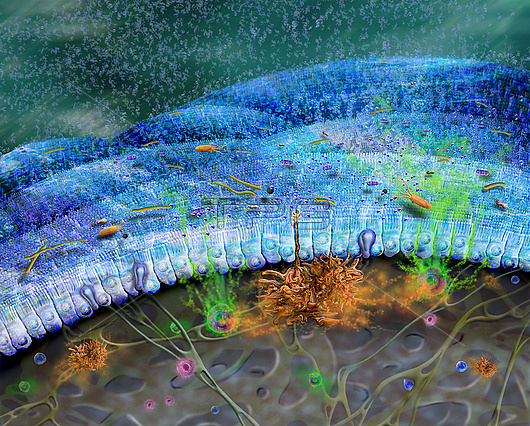
Illustration showing the immune response to bacteria in the gut. Bacteria and other foreign objects in the body are recognised by cells that are part of the immune system. Dendritic cells (orange, centre) are one of these cells. They are antigen-presenting cells (APCs), that is, they present pathogens or foreign molecules (antigens, blue spheres) to other cells of the immune system to be eliminated. Dendritic cells release cytokines (signalling molecules) such as interleukin-23 (IL-23, orange fog). IL23 can stimulate another group of cells called type three innate lymphoid cells (ILC3, purple-green spheres). ILC3 cells can also release cytokines such as interleukin-22 (IL-22, green fog). IL-22 is part of the body's antimicrobial response. Type one (ILC1, lower blue spheres) and type 2 (ILC2, lower purple spheres) innate lymphoid cells are also seen. ILC1 cells activate macrophages and signal to T-lymphocyte cells. ILC2 play a role in the immune response to parasites, external toxins, venom and allergens.
| px | px | dpi | = | cm | x | cm | = | MB |
Details
Creative#:
TOP26437343
Source:
達志影像
Authorization Type:
RM
Release Information:
須由TPG 完整授權
Model Release:
N/A
Property Release:
N/A
Right to Privacy:
No
Same folder images:

 Loading
Loading